Introduction: Why Math Still Shapes the Tech World
For centuries, mathematics has quietly supported human progress. From constructing pyramids to navigating oceans, math has shaped civilizations and enabled technological breakthroughs. Today, as we explore technology trends in 2025, including artificial intelligence, machine learning, and data-driven innovations, one branch of math stands out: linear algebra.
The challenge is that while these technologies appear futuristic and complex, they often rely on basic math principles. Many learners, engineers, and even professionals may overlook their significance. Without a firm understanding of vectors, matrices, and transformations, the algorithms behind AI advancements, cybersecurity measures, and smart device functionalities would collapse.
This is why mastering linear algebra is no longer just an academic pursuit—it has become a practical necessity for anyone who wants to understand, work with, or innovate in today’s digital world.
What is Linear Algebra in Simple Terms (With Mathematical Implementation)
Linear algebra is a branch of mathematics focused on vectors, vector spaces, and linear transformations. You can think of it as the language of data and dimensions—a set of rules that enables us to store, manipulate, and transform information mathematically.
Unlike arithmetic, which deals with individual numbers, linear algebra works with groups of numbers arranged in structured forms like vectors and matrices. These structures form the foundation of most AI advancements, tech innovations, and data-driven systems we rely on today.
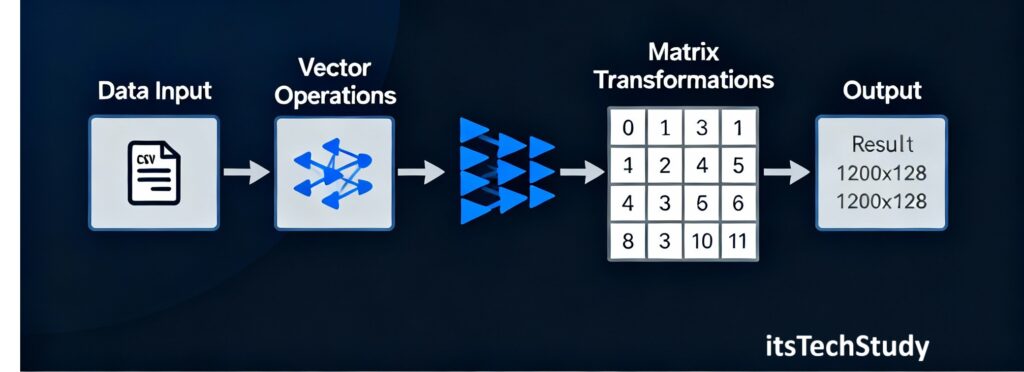
1. Vectors: Representing Data in Mathematical Form
A vector is simply an ordered list of numbers. In blog-friendly format, we can represent it as:
v = [v1, v2, v3]This vector could represent:
- A point in 3D space:
[x, y, z] - A pixel’s RGB values in an image:
[Red, Green, Blue] - A user’s behavior data:
[number of clicks, time spent, rating]
Example in Technology:
Suppose Netflix wants to recommend a movie. Each user can be represented as a vector of preferences
u = [5, 3, 0, 4]Here, the numbers might represent ratings for different genres (Action, Comedy, Horror, Drama). The recommendation engine compares this vector with movie vectors to find the best match.
2. Matrices: Organizing and Manipulating Data
A matrix is a rectangular grid of numbers organized in rows and columns. For blog-friendly display, we can show it as:
A = [[1, 2, 3],
[4, 5, 6],
[7, 8, 9]]Matrices allow us to store and process large datasets efficiently.
Implementation in Technology:
- Image Processing: An image is represented as a matrix of pixel values. Filters like blur or edge detection are applied by multiplying the image matrix with smaller filter matrices.
- Machine Learning: Neural network weights are stored as matrices. During training, input vectors are multiplied by these matrices to generate predictions.
Example in AI:
Prediction = User_Vector * Movie_MatrixThis calculation helps find the best recommendation for a user by combining user preferences with movie data.
3. Transformations: Moving and Changing Data
Linear transformations are rules applied to vectors or matrices to change their orientation, size, or representation.
Mathematically, we express this as:
Transformed_Vector = Transformation_Matrix * Original_VectorWhere Transformation_Matrix is the matrix applied and Original_Vector is the data being transformed.
Examples in Technology:
- 3D Graphics: Rotating a 3D object in a video game involves multiplying the object’s vertex vectors by a rotation matrix.
- Compression: Reducing large files requires transformations to remove redundant data while retaining key features.
- Speech Recognition: Audio signals are converted into frequency components using linear algebra before AI processing.
Putting It All Together
If arithmetic deals with simple numbers, linear algebra deals with structures of numbers that interact.
- A vector is like a single piece of structured data.
- A matrix organizes multiple vectors and enables batch operations.
- A transformation applies mathematical rules to manipulate data into new forms.
These concepts allow computers to “see” images, “hear” sounds, and “understand” text, giving machines the ability to think, learn, and innovate.
Why Linear Algebra Matters in Technology Today
Linear algebra is often invisible but foundational in the digital era:
- AI and Machine Learning: Model training relies on operations over large matrices.
- Computer Graphics: Animations, games, and AR/VR use transformations derived from linear algebra.
- Data Science: Organizing, analyzing, and compressing massive datasets depends on matrix operations.
- Cybersecurity: Encryption algorithms use linear algebra to secure communications.
- Smart Devices: From voice assistants to IoT sensors, linear algebra shapes recognition and prediction systems.
Without linear algebra, the technology innovations we rely on today simply wouldn’t exist.
Core Concepts of Linear Algebra
1. Vectors: The Building Blocks
Vectors represent magnitude and direction. In technology:
- Photos are collections of pixel vectors.
- Songs are arrays of sound wave vectors.
- Recommendation systems use vectorized user preferences.
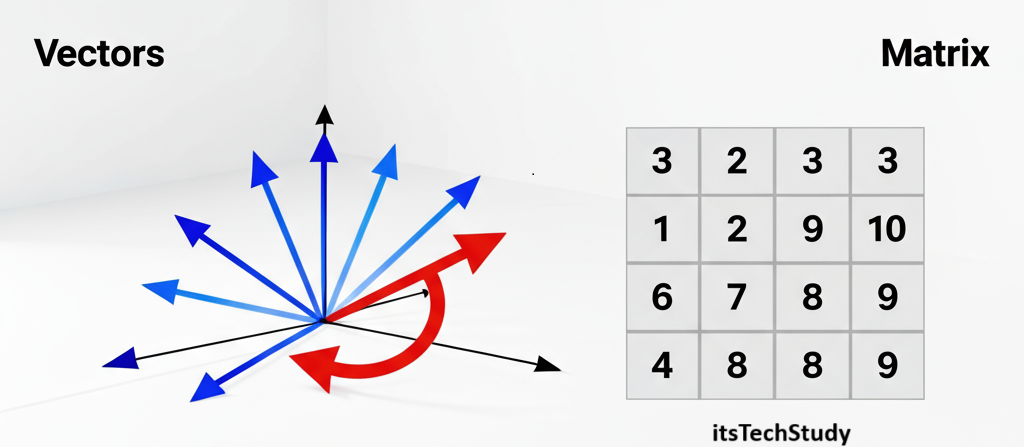
2. Matrices: Organizing Data
Matrices are grids of numbers. They:
- Store and transform data.
- Enable rotation, scaling, and compression in graphics.
- Represent neural network weights in AI.
3. Linear Transformations: Moving Data Around
Transformations allow us to rotate, flip, project, or scale data in multiple dimensions.
- Example: Rotating a 3D model in a game.
- Example: Converting raw voice signals into a format AI systems can process.
Table: Real-World Analogies of Linear Algebra Concepts
| Concept | In Linear Algebra | In Real Life / Tech |
|---|---|---|
| Vectors | Data points in space | User preferences on Netflix, GPS data |
| Matrices | Grid of numbers | Digital images, ML weights, Excel sheets |
| Linear Transformation | Operations applied to vectors/matrices | Rotating a 3D model, resizing images, AR filters |
| Eigenvalues/Vectors | Directions of maximum variance | Facial recognition, compression algorithms |
How Linear Algebra Powers Algorithms
Linear algebra works silently behind the scenes in many everyday technologies:
- Recommendation Systems: Maps user preferences using vectors to suggest content.
- Image Recognition: Breaks down images into matrices for processing.
- Natural Language Processing (NLP): Converts text into vectors for chatbots or search engines.
- Big Data: Efficiently handles and compresses massive datasets.
Pros and Cons of Learning Linear Algebra for Tech Careers
Pros:
- Provides a deep understanding of AI and machine learning.
- Forms the mathematical foundation for data science.
- Essential for computer graphics, gaming, and AR/VR.
- Enhances problem-solving and logical thinking skills.
Cons:
- Can feel abstract or intimidating for beginners.
- Requires solid math fundamentals.
- Time-intensive to master without real-world projects.
Step-by-Step: How Linear Algebra Fits Into Everyday Technology
- Data Collection: Gather images, clicks, text, and other user data.
- Vectorization: Convert raw data into vectors.
- Matrix Operations: Apply filters, weights, and transformations.
- Training Algorithms: Use linear algebra to optimize AI models.
- Prediction & Output: Generate recommendations, predictions, or visualizations.
This cycle repeats in countless smart devices and tech applications we use every day.
Conclusion: The Foundation for Tomorrow’s Technology
Linear algebra may seem abstract, but it forms the hidden backbone of modern technology. From AI models to smart devices, cybersecurity to quantum computing, its influence is everywhere.
In this first part, we explored foundations, core concepts, and importance. In Part 2, we will dive into real-world applications in AI, robotics, big data, and future tech trends.
By mastering linear algebra, you’re not just learning mathematics—you’re unlocking the blueprint for innovation in the digital era.
Stay Tuned: Part 2 Coming Soon!
Don’t miss out—unlock the next level of understanding and see the hidden power of linear algebra in action. Stay tuned and get ready to explore the future of technology like never before!
FAQs: Understanding Linear Algebra Foundations
Q1: Do I need to be a math expert to understand linear algebra?
Ans: Not necessarily. Visual tools and real-world examples make it approachable for beginners.
Q2: Why is linear algebra important for AI and machine learning?
Ans: All AI computations rely on vectors and matrices. Without linear algebra, AI cannot function.
Q3: How is linear algebra used in computer graphics?
Ans: It powers transformations like scaling, rotation, and projection in animations, AR filters, and games.
Q4: Can linear algebra help in cybersecurity?
Ans: Yes. Encryption algorithms frequently rely on linear algebra to secure communications.
Q5: What’s the easiest way to start learning linear algebra?
Ans: Begin with vectors and matrices using visual aids or Python libraries like NumPy, then move on to transformations and eigenvalues.


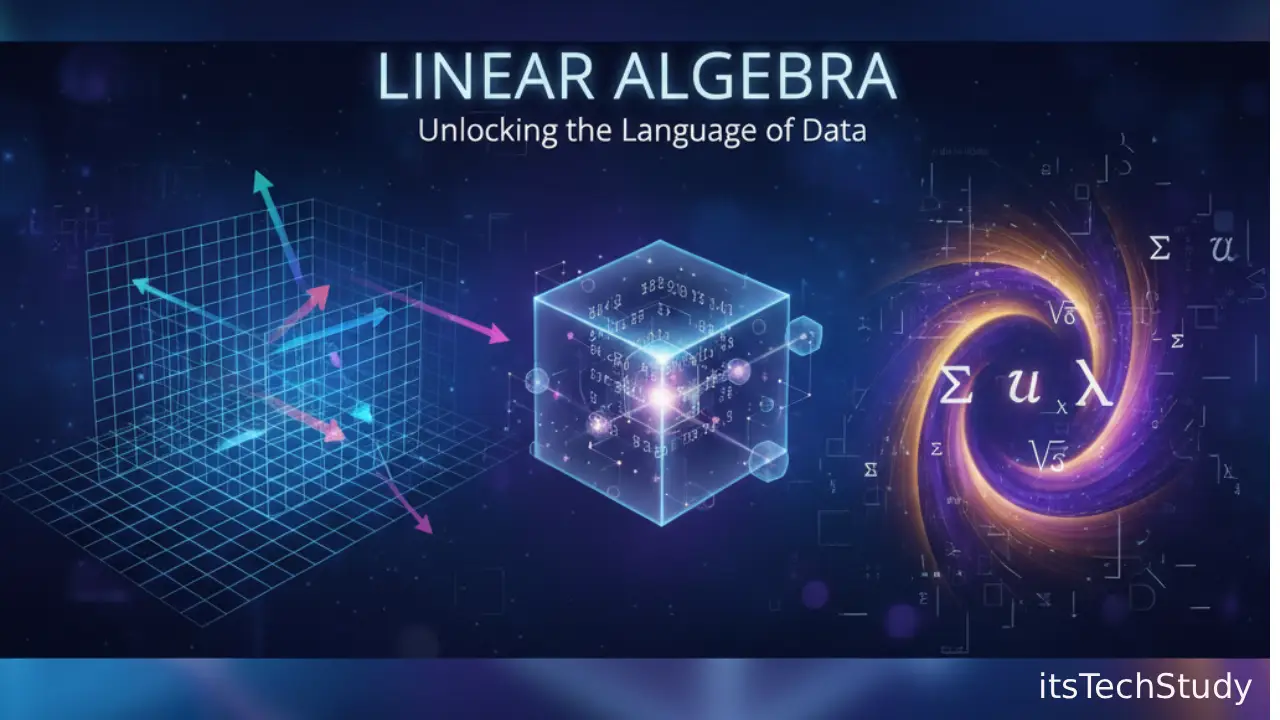

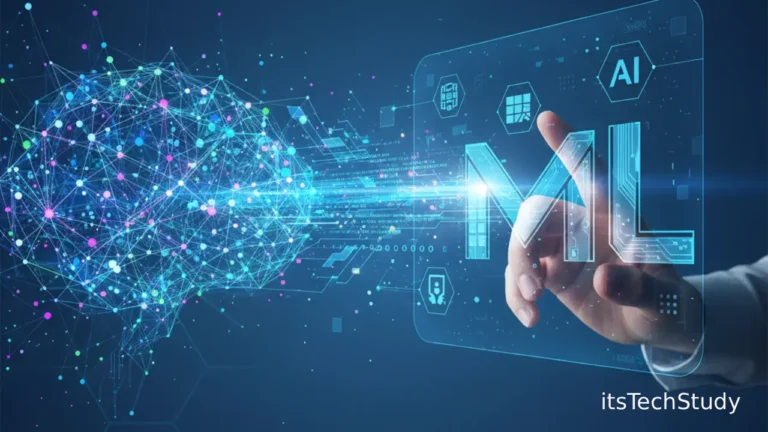
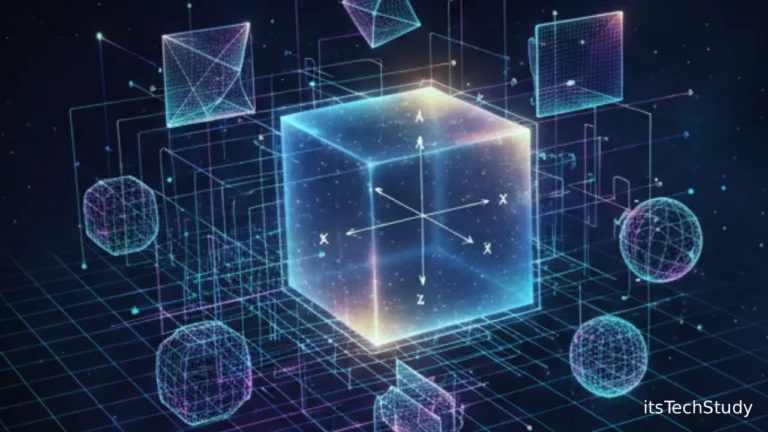
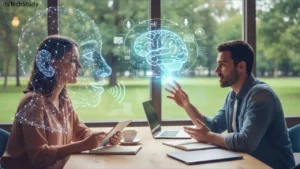


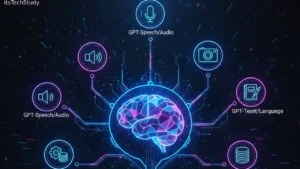

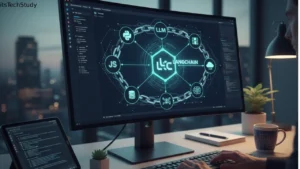
No Comments Yet
Be the first to share your thoughts.
Leave a Comment